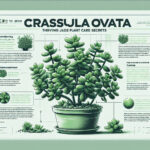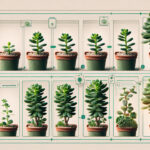Introduction to Crassula and Jade Plants
Take a stroll through any botanical haven or the cozy corner of a plant lover’s home, and you’re likely to encounter the ever-popular Crassula species, standing proud alongside its lookalike, the common Jade plant. These two botanical buddies are hailed as celebrities in the horticulture world, often leaving enthusiasts to wonder, are they twins or just doppelgängers in the plant kingdom? Let’s delve into their leafy lineage and set the roots for a verdant voyage into their similarities and distinctions.
The Crassula genus is a tapestry of succulents, each member flaunting fleshy leaves that have mastered the art of water storage, making them the embodiment of resilience and grace. Among them, the Jade plant, with its thick, glossy leaves, sometimes tinged with a blush of red, reigns as a household gem, evoking prosperity and good fortune for those who nurture it. Reflecting on their sturdiness, it’s no surprise that they’re often passed down through generations, growing into a green heirloom of sorts.
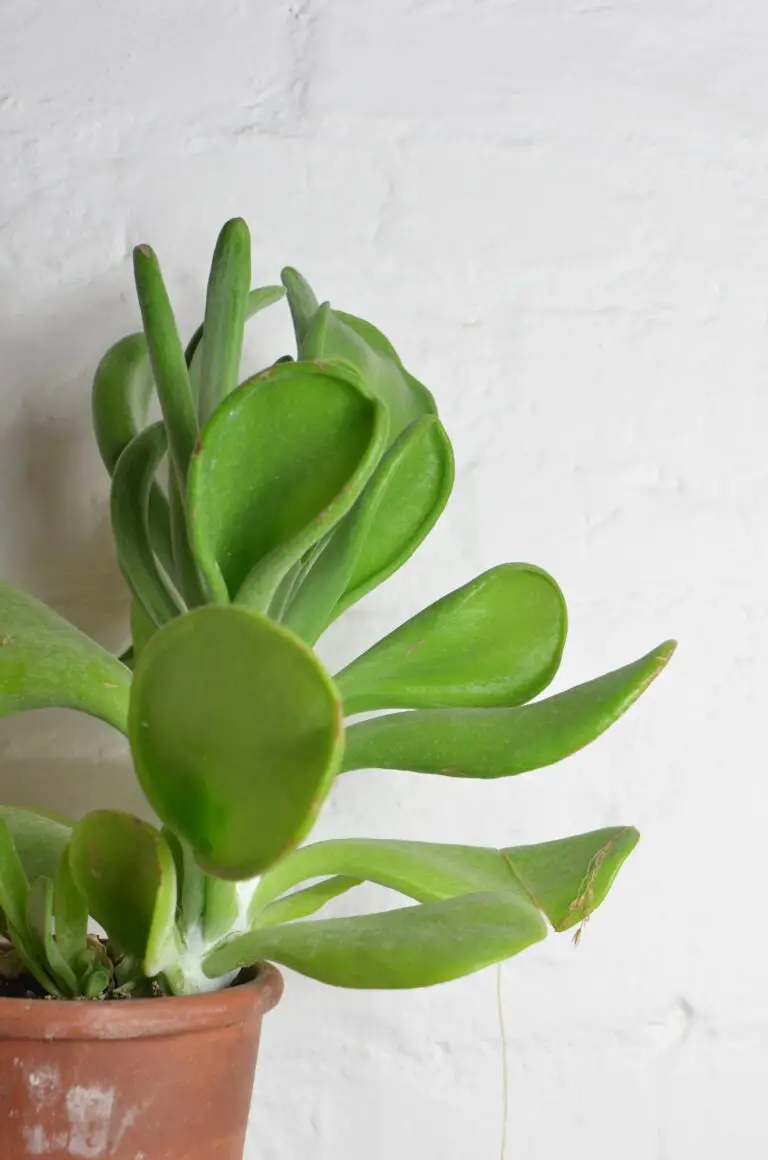
For the curious minds aching to deepen their green-thumbed expertise, we invite you to explore the Jade plant’s journey in thriving within the confines of your own abode. As we unpot the myths and cultivate the facts, we’ll come to understand what sets the Crassula genus apart and what binds it to the charming Jade. Are you ready to unfold the verdant veil and uncover the botanical truth of these green glories? Stay tuned as we dig deeper.
Understanding the Crassula Genus
Welcome to the world of Crassula, a botanical family treasured by plant enthusiasts and succulent collectors alike! But what exactly falls under this green, leafy umbrella? As we delve into the verdant diversity of the Crassula genus, we’ll uncover a tapestry of species each with its unique charm. From the tiny, almost bonsai-like Crassula ‘Buddha’s Temple’ to the robust and resilient Crassula ovata—commonly known as the classic Jade Plant—these succulents boast a myriad of forms and functions
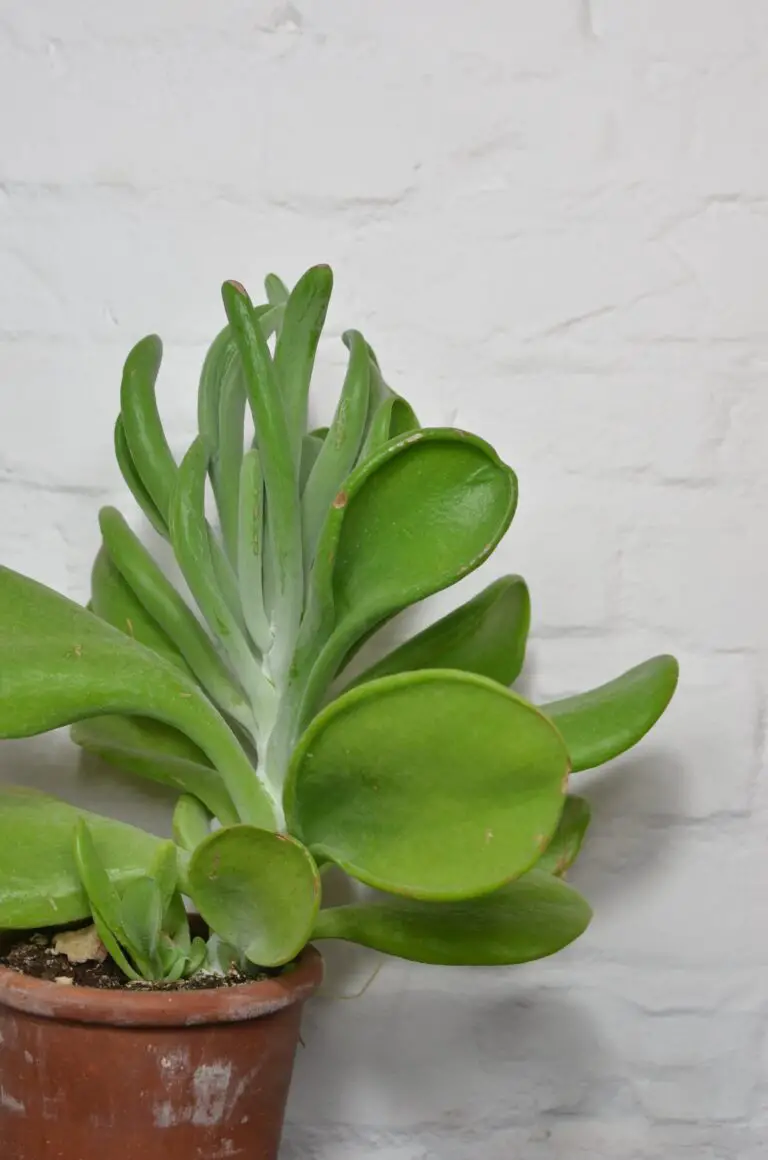
Did you know that Crassula plants can range from ground-hugging compact rosettes to tree-like structures? That’s right, while some Crassula species hug the earth, others soar to imposing heights. Take for instance the Crassula ‘Gollum’—yes, named after the iconic character from ‘The Lord of the Rings’—with its tubular leaves that look like a choir of tiny green trumpets. Or ponder the Crassula capitella ‘Campfire’, which sets landscapes ablaze with fiery red leaves that ignite with color as the seasons shift.
Speaking of adaptability, Crassulas are a dream for those seeking hardy, low-maintenance botanical buddies, making them perfect for indoor cultivation. Discover more about these lively green companions and how you could create a tranquil nook of nature right in your urban dwelling. It’s a love affair between versatility and beauty, where every plant tells a story of survival and splendor.
It’s not just their looks that make Crassulas so captivating–they come with a tale to tell. Their robust nature speaks to their origins in arid, unforgiving landscapes where the only currency is resilience. As masters of water storage, their plump leaves and stout stems offer fascinating examples of nature’s solutions to the challenges of survival.
Ready to dive deeper into this succulent sanctuary? Whether you have a deep-seated passion for plants or simply enjoy a touch of green in your life, understanding the Crassula genus is your gateway to a world where nature’s ingenuity meets aesthetic delight.
Jade Plant: A Crassula Species?
Let’s dive right into the leafy world of succulents and crack the case of the mysterious Jade plant—is it really a member of the Crassula family or just a distant green cousin? It’s like a botanical whodunit, and we’re on the trail of its true identity.
Imagine strolling through a vibrant garden center, and your gaze lands on the lush, glossy leaves of a Jade plant. You might be thinking, “Ah, the classic Crassula!” But wait—what if I told you there’s more to this story? Let’s peel back the layers of scientific classification and get to the root of this verdant enigma.
The Jade plant, with its plump leaves and stout branches, often stands proudly in homes as a symbol of good luck. But where does it fit in the big family tree of plants? It’s often assumed to be part of the Crassula genus, but in the world of flora, assumptions can lead to a wild goose chase.
Now, don’t get caught in a tangle of taxonomy! While there is a fleet of Crassula species sailing under the succulent flag, the Jade plant, known scientifically as Crassula ovata, indeed has its passport stamped in the Crassula genus. Yes, it’s one of the star members, and rightly so with its easy-going nature and robust demeanor.
For the green-thumbed detectives out there, you’ll find that putting on your botanical cap and looking closer will reveal that the Jade plant doesn’t just carry the Crassula badge; it embodies the very essence of what makes these succulents the treasures they are—resilience, beauty, and a knack for sprucing up any nook and cranny with their vibrant presence.
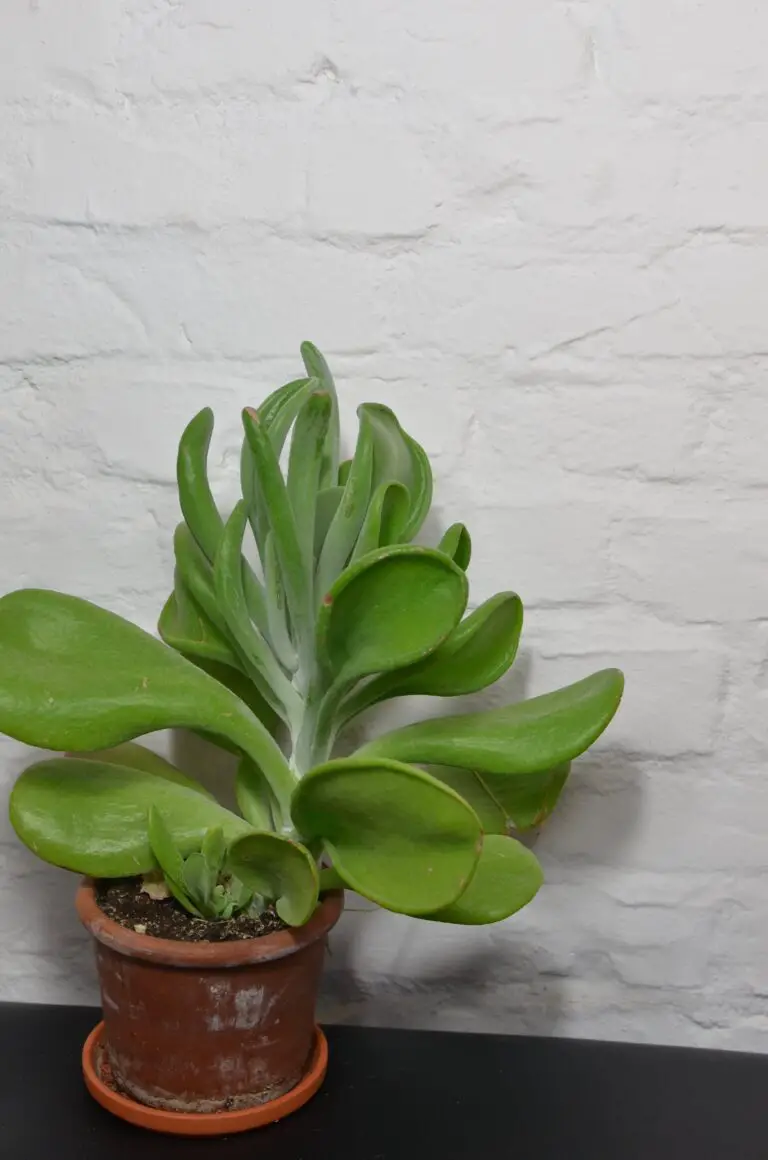
So next time you find yourself admiring the tranquil presence of a Jade plant, remember, you’re not just looking at a pretty face; you’re gazing upon a true Crassula, a botanical gem that has nestled its way into hearts and homes around the globe with its distinctive panache and leafy grace.
The Telltale Traits of True Jade Plants
Let’s dive into the world of succulents and put the spotlight on the true star of the show, the Crassula ovata. Commonly known as the Jade plant, it’s beloved by many for its plump, glossy leaves that have become synonymous with prosperity and good fortune. But what sets a true Jade plant apart from its succulent siblings?
Picture this: the sun is setting, and you’re wandering through a greenhouse brimming with succulents. Your eyes are gleaming like the Ruby of the Orient as you spot it—the Crassula ovata. Its signature fleshy, oval leaves that whisper tales of ancient wisdom and endurance can’t be mistaken. These leaves are more than just a water reservoir; they’re the energy bank of this drought-enduring warrior.
It’s not just the leaves that make this plant a standout in the succulent crowd. The Crassula ovata’s tree-like stature tells a story of resilience and growth. Over time, with the right care, it evolves from a petite potted plant into a majestic mini-tree. Each robust stem thickens, much like the trunk of a tree, and branches out, cradling clusters of lustrous leaves.
Embedded within these waxy leaves is the secret to the Jade plant’s unwavering fortitude—an incredible ability to retain water. In the wild, these plants often thrive in arid environments where moisture is a precious commodity. Yet, they endure, thanks to their prudent conservation tactics, much like a wise old sage hoarding nuggets of knowledge.
But let’s not just leave it to the imagination. See for yourself the beauty and brawn of the Crassula ovata in this insightful video:
When twilight beckons and the shadows dance along your windowsill, that’s when the Jade plant truly shines. It’s not unusual to see a throng of these succulents basking in the soft glow of the moon, their leaves reflecting the light like emerald sentinels guarding your indoor oasis.
So, is Crassula the same as a Jade plant? While they are often used interchangeably, true Jade plants possess a unique set of traits—robustness akin to a tree, plush leaves filled with vitality, and an unwavering spirit that breathes life into any space they occupy. Spotting a genuine Crassula ovata is like recognizing an old friend in a crowd; its familiar form captures the heart and brings a bit of nature’s soul into our homes.
Cultural Significance and Care Guide
The Jade plant, often synonymous with Crassula varieties, has woven itself into the fabric of horticultural admiration not just for its plump, glossy leaves, but for the profound symbolism it carries. Across cultures, the Jade plant has been hailed as a bastion of good fortune and prosperity, turning homes into harbors of positive energy. In the East, it’s revered as a living ode to financial growth, with many business owners placing this succulent near their entrances as a talisman for wealth.
But the appeal of the Jade plant stretches beyond mystic lore. It’s a botanical celebrity, acclaimed for its easy-going nature and resilience. Picture this—amid the whirlwind of urban life, a touch of greenery perches steadfastly on a high-rise apartment window sill, basking in the caresses of the day’s light. This scene is made possible by the Crassula’s low-maintenance persona, a real-life testament to its popularity among both rookie gardeners and seasoned green thumbs.
When it comes to care, simplicity reigns. Crassula varieties thirst for bright, indirect light, their fleshy leaves soaking up the rays to churn out oxygen, adding a breath of fresh air to any space. Watering is an infrequent affair, best done when the soil whispers for moisture. Overwatering is a foe that beckons the root rot beast, so a spar with moderation is key to a Jade plant’s thriving existence.
Even in feeding, Crassula plants beg for little but reward with much. A speck of fertilizer during their growing season, and they parade their lushness with pride. It’s no wonder that these plants have become a staple in homes and offices, their care a meditative act that reminds us of nature’s effortless beauty.
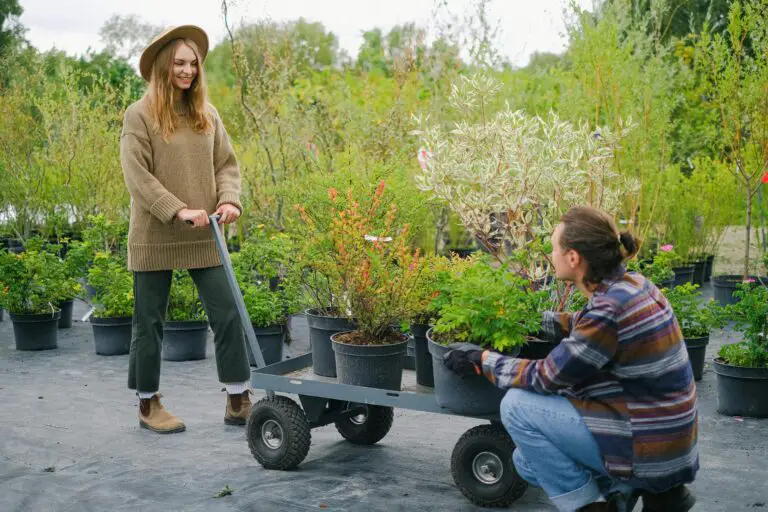
Crassula vs. Jade: Unraveling the Confusion
In the vibrant world of succulents, the terms ‘Crassula’ and ‘Jade Plant’ often mingle in garden chatter, as intertwined as the plants’ own fleshy leaves. But are they truly one and the same? Let’s dive into the lush, leafy details and dissect the differences between these plump pals.
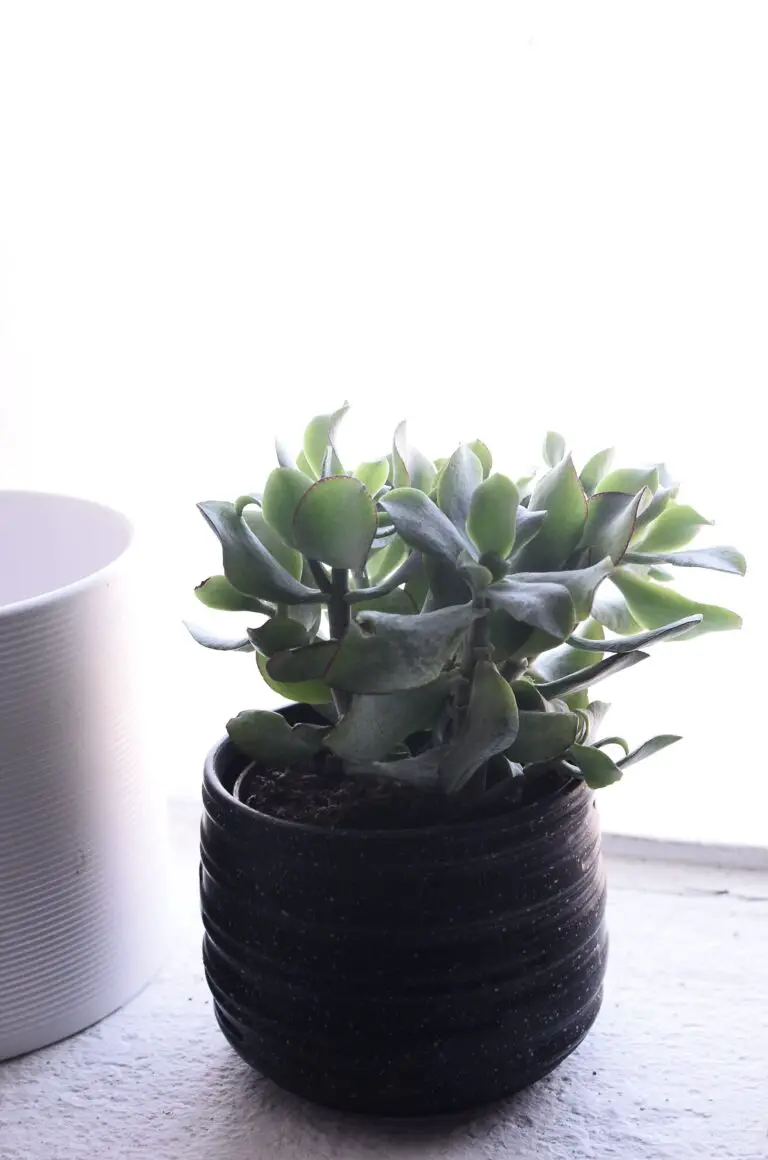
Think of Crassula as a large, diverse family with members scattered across the globe, flaunting varying shapes, sizes, and survival strategies. Within this broad genus, there’s a celebrity known affectionately as the Jade Plant, or Crassula ovata. This star’s name often overshadows its cousins and confuses well-meaning plant enthusiasts trying to navigate their relationship. Let’s set the record straight: all Jade Plants are Crassulas, but not all Crassulas are Jade Plants.
Spotting the Differences: A Visual Journey
Imagine walking through a sunlit greenhouse. On one shelf sits a Crassula ovata, its plump, oval leaves glimmering like jade stones, while nearby, a Crassula arborescens presents a silvery show with its round, moon-like foliage. The visual cues are subtle yet significant. These botanical nuances puzzle many but also add a dash of mystery to the art of gardening.
Needs and Nourishment: Every Plant Has Its Menu
While both thrive on neglect – a lazy gardener’s dream – the Crassula family demands diversity in care. Some prefer a sunny siesta and less water, thriving in the heat like sunbathers at the beach. Others, including the celebrity Jade Plant, are a bit more high-maintenance, seeking the perfect balance of sunlight and shade to showcase their full, green glory.
Designing with Plants: Where to Place Your Green Friends
And when it comes to decorating your space – whether it be a cozy corner of your home or a sprawling office atrium – understanding these subtle differences can make or break the ambiance. A stately Jade Plant might command the spotlight on a lonely pedestal, while a trailing Crassula perforata is more at ease cascading down a hanging pot, softening the edges of an urban loft’s stark walls. The key is to match the plant’s personality with your place’s vibe.
So, whether you’re propagating a petite Crassula or preening a proud Jade Plant, remember that each succulent has its own story. With a bit of research and a splash of creativity, you can cultivate a green sanctuary that’s both botanically accurate and aesthetically pleasing. As you tend to these succulent siblings, cherish their similarities and celebrate their differences – just as nature intended.
Expert Tips for Cultivating Your Succulents
Embarking on the journey of succulent cultivation brings with it the promise of lush, thriving plants that can invigorate any space—be it the cozy corner of an apartment or the sun-kissed stretches of a backyard. Yet, navigating the care for Crassula plants and their often-confused counterpart, the Jade plant, can leave many a plant aficionado at a crossroads. Let’s delve into the best practices that will help your green companions not just survive but truly flourish.
Starting With Soil: Foundation for Succulent Success
Whether it’s the alluring Crassula or the robust Jade plant hitching onto your green thumb, the soil they root in is pivotal. These succulent stunners ache for well-draining soil—think a mix that’s one part organic matter, and another part sandy loam. It’s a medley that retains just enough water to quench their thirst yet shuns excess moisture like a fastidious cat avoids water.

Watering Wisdom: The Delicate Dance of Hydration
Quench their roots, not their spirits! Overzealous watering is akin to loving your plants to perdition. Whether harbored indoors where light is in measured supply or basking outdoors, the rule is the same: wait for the soil to dry before the next watering spree. It’s a tender balance, with Crassula plants often being content with less compared to their Jade siblings.
Light: A Beacon of Growth for Your Botanical Buddies
Luminescence is to succulents what wind is to sails, and finding that sweet spot of sunshine is imperative. While the Jade plant might revel in full sun, relishing hours of golden glow, its Crassula cousin performs a more restrained dance with light, often flourishing best in a dappled shade that whispers tales of the forest floor.
Scripting seasonal symphonies, these succulents also appreciate a bit of sunbathing indoors by a window, where rays are abundant but not scorching, or under the celestial canopy of a soft-lit patio.
Temperature and the Tango of Tolerance
Warm, dry confines are the cradle for these drought-endearing darlings. While they can endure lower temperatures, remember: the cosseting warmth of a temperate climate encourages their leaves to swell with verdant vigor. And when the mercury dips, providing a shelter that echoes the arid homelands of their ancestors will keep their succulent hearts beating strong.
Feeding Finesse: Nutrients for Noble Growth
Finally, let’s talk feeding—a sort of botanical brunch, if you will. This isn’t a daily affair but a thoughtful supplement given at the advent of their growth season. A mild, balanced fertilizer will suffice; it’s the gourmet tidbit that results in succulents that are not merely surviving but thriving with plump leaves and stoic stems.
Remember, whether it’s the celebrated Crassula or the cherished Jade, growing these succulents is less about stringent care and more about understanding and respecting their intrinsic needs—a philosophy that when embraced, yields a garden of not just plants but living sculptures that titillate the senses and embellish the soul.
Demystifying Common Misconceptions
When you stroll through the leafy aisles of a garden center or swipe through the lush grids of plant influencers, you’re likely to encounter the robust and cheerful succulents known as Crassula and the Jade plant. At first glance, these succulent siblings might trick you into thinking they are the same. But hold your watering cans, green thumbs, because we’re about to uproot some common misconceptions and clarify the botanical truth about these popular plants.
Consider the Crassula ovata, commonly hailed as the Jade plant. If you’ve ever visited a friend who seems to have a magical touch with plants, chances are you’ve admired a Jade plant basking gleefully on their windowsill. These sturdy plants with their glossy, jade-colored leaves have been a staple in homes for generations, but the Crassula genus is a vast family with over 200 diverse species! That’s right, the Jade plant is just one member of a grand botanical lineage, each with its unique charm.
Now, let’s set the record straight—while all Jade plants can be classified as Crassula, not all Crassula species can be called a Jade plant. It’s like saying all apples are fruit, but not all fruit are apples. Some Crassula species bear a striking resemblance to the classic Jade plant but offer a twist in form, color, or size. So, when you hear someone regale the virtues of their ‘Jade plant’, they might unknowingly be singing praises to a Crassula that’s donning a different botanical coat.
To foster a true appreciation for these succulent wonders, let’s take a lesson from nature’s playbook. Variation is the spice of the botanical world, and the Crassula family is no exception. Different light conditions, watering habits, and even the pot’s shape can make a world of difference in the appearance of these plants. Just like a chef expertly tweaks a recipe, altering growing conditions can coax out the unique characteristics of each Crassula, transforming what might be mistaken for a Jade plant into an exotic display of succulent variety.
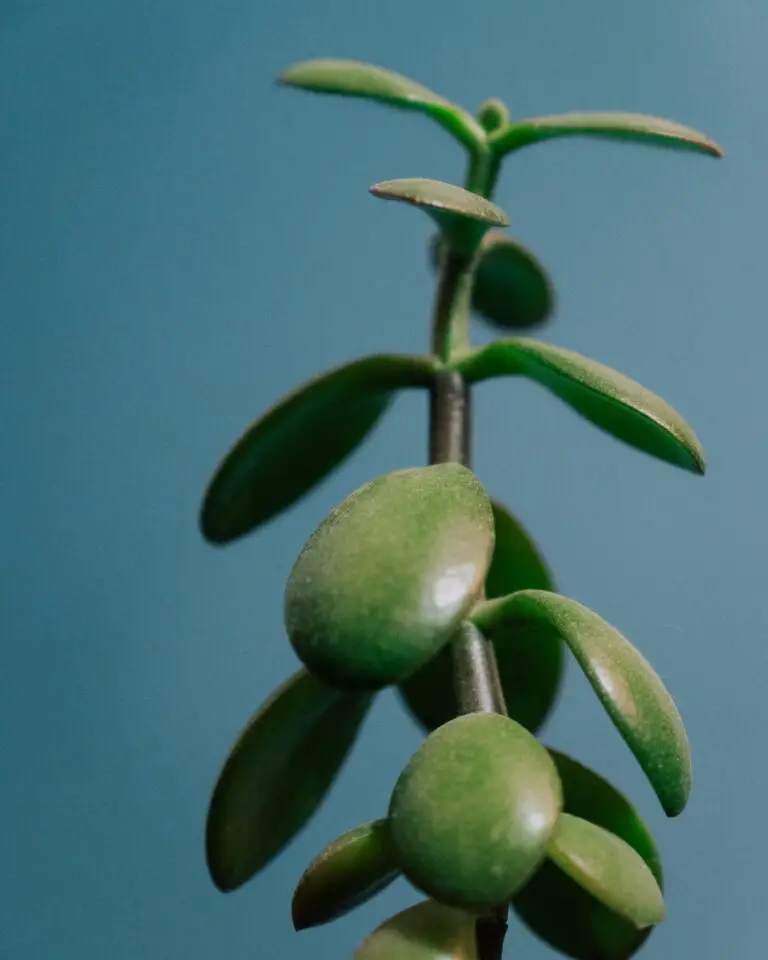
Imagine you’re gifting a plant to a friend who’s a tad neglectful with their flora. Instead of opting for the well-known Jade plant, you might choose a Crassula arborescens, with its silvery leaves that forgive a forgetful waterer. It’s nuances like these that elevate Crassula from just a plant to a thoughtful token of friendship and a testament to the diversity within this remarkable genus.
The beauty of understanding the difference between Crassula and Jade plants is akin to appreciating the nuances of fine wines or artisanal cheeses. It’s about savoring the subtle complexities and engaging with the natural world on a more intimate level. So next time you encounter these succulent staples, take a moment to appreciate their distinct identities and the vibrant botanical diversity they represent.
Frequently Asked Questions
Delving into the world of succulents can oftentimes stir up a bit of confusion, especially when terms like “Crassula” and “Jade Plant” pop up. So, let’s clear the air with some straightforward, no-nonsense answers to those burning questions plant enthusiasts frequently ask.
Are Crassula and Jade Plants Botanically Identical?
When one talks about a Jade plant, it’s like referring to a close-knit family’s most famous member. Jade plant, or Crassula ovata, belongs to the larger Crassula genus, which boasts over 200 species! But if you’re picturing a lush, robust plant with opulent, jade-green leaves that’s become the poster child of prosperity in many cultures, then you’re definitely thinking of the famed Jade Plant. Rest assured, when someone gives you a “Jade Plant”, it’s the Crassula ovata they’re talking about – the star of its genus.
Is Caring for a Crassula Different Than Tending to a Jade Plant?
Even though all Crassula species share the same succulent lineage, their care can be as varied as the species themselves. The classic Jade plant thrives with a bit of neglect – think the sun-soaked windowsill of a forgetful poet. However, imagine a Crassula variety that’s more high-maintenance, pouting unless it gets the perfect pattern of sunlight dappling through lace curtains. Key takeaway? Get to know your specific plant’s quirks!
Can I Propagate My Jade Plant Like Any Other Crassula?
Absolutely! Propagation is like creating a mini-me of your beloved plant, and Jade Plants are quite generous in this aspect. In the world of Crassulas, it’s common to snip off a leaf, lay it atop soil, and watch the magic unfold. Yet, it’s the Jade Plant’s sturdiness that often sets the bar – those thick leaves can weather the propagation journey better than some of its delicate cousins.
What’s the Real-Life Difference Between These Plants?
Think of Crassulas as the vast cosmos, and the Jade Plant as the brightest star in the night sky. In real-life scenarios, you can find countless varieties of Crassulas adorning sophisticated terrariums or hanging in avant-garde planters – each with its unique charm. But if you’re in an office drawing good luck vibes, or visiting a grandma whose green thumb is the stuff of legends, it’s the Jade Plant that’s likely soaking up the admiration and accomplishing the Feng Shui mission.
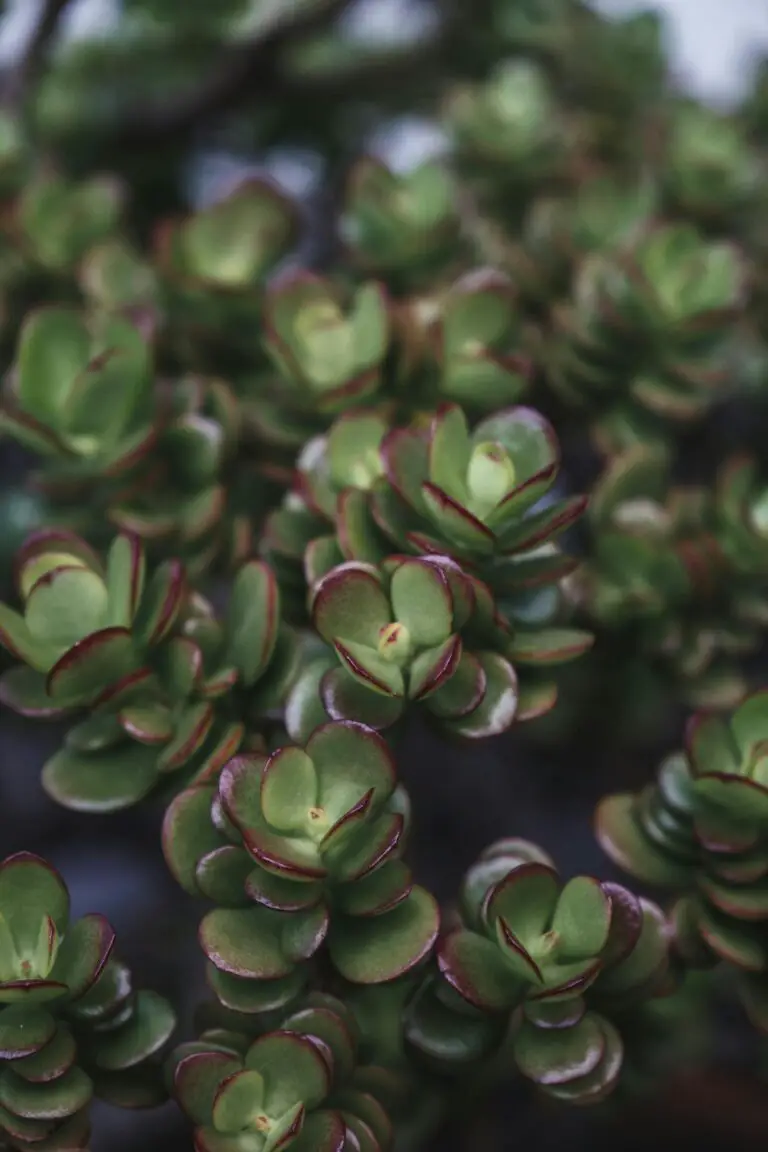
Endless queries might sprout when it comes to the world of succulents, but whether you’re a budding green-thumbed gardener or a seasoned horticulturist, understanding the subtle distinctions between Crassula and Jade Plants truly enriches your plant raising journey. Embrace the botanical nuances, and nurture your leafy companions with the wisdom you’ve gleaned. No doubt, your Crassulas and that eminent Jade Plant will thrive, becoming the verdant marvels they’re destined to be.
